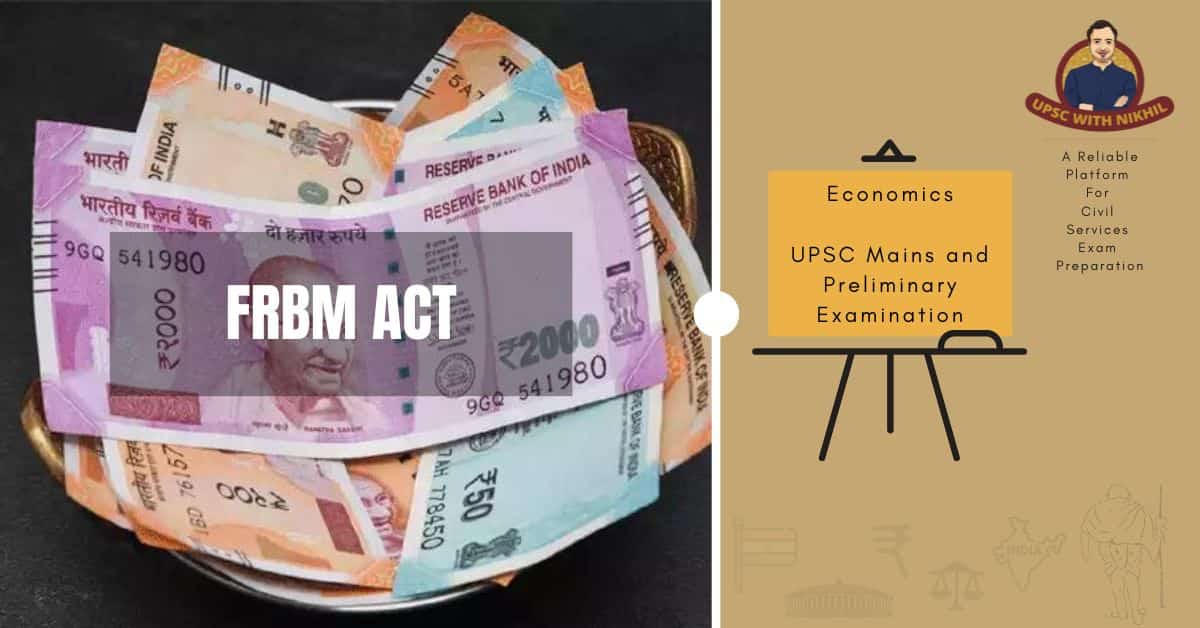Frbm Act
FRBM Act -The Financial Responsibility and Budgeting Management Act, also known as the FRBM Act, was passed by the Indian Parliament with the goals of institutionalizing fiscal stability, reducing the fiscal deficit, boosting macroeconomic stability, and overall maintaining public money. The FRBM Act fosters budgetary decision-making transparency and guarantees intergenerational equity.
In accordance with the FRBM Act of 2003, the Indian parliament mandates that the government maintain financial discipline, enhance public financial management, strengthen fiscal prudence, and lower the nation's fiscal deficits.
What Is FRBM Act?
Fiscal Responsibility and Budget Management Act is the full form of the law. The Financial Responsibility and Budgeting Management Act (FRBM Act) was passed by the Indian Parliament in order to institutionalize fiscal stability, reduce India's fiscal deficit, improve macroeconomic stability, and generally maintain public funds. It accomplishes these goals by working toward a balanced budget and encouraging fiscal restraint.
The FRBM Act is briefly described in the article below, which highlights its significance. The FRBM Act's primary objectives were to eliminate the nation's revenue deficit (and subsequently create a revenue surplus) and bring the fiscal deficit down to a manageable 3% of GDP by March 2008.
• However, the FRBM Act's dates for implementation were originally delayed and subsequently suspended in 2009 as a result of the global financial crisis of 2007.
• The Economic Advisory Council publicly urged the Indian government to consider reinstating the FRBM Act's provisions in 2011, citing the nation's ongoing recovery progress.
• Currently, the Fiscal Responsibility and Budget Management Act Review Committee, which reports to the Ministry of Finance, is chaired by N. K. Singh (India).
Adoption of The FRBM Act Of 2003
The Fiscal Responsibility and Budget Management Bill (FRBM Bill) was introduced by India's then-Finance Minister, Mr. Yashwant Sinha, in December 2000. Due to substantial public borrowing, a high fiscal & revenue imbalance, and a high debt-to-GDP ratio, the FRBM Act was suggested.
The bill's declaration of goals and reasons began by emphasizing the catastrophic situation of India's national and state governments' finances. It also had the goal of educating government representatives of all ranks in the fundamentals of fiscal discipline.
The FRBM bill was introduced with the broad objectives of eradicating the revenue deficit by March 31, 2006, prohibiting government borrowing from the Reserve Bank of India for three years after its passage, and bringing down the fiscal deficit to 2% of GDP by that date.
The plan also stipulated that by 2011, the government's obligations should be cut to 50% of projected GDP.
Goals of The FRBM Act
• The FRBM Act's goal was to achieve macroeconomic and financial stability. To balance India's economy, a fiscal policy has been put in place. The main objectives of the Fiscal Responsibility and Budget Management Act were to:
• Create open fiscal management systems throughout the nation.
• Allocate the nation's obligations in a more fair and manageable manner throughout time.
• Ensure India's long-term budgetary stability.
• The act was also designed to give the Reserve Bank of India the necessary freedom to control inflation in India.
Aspects Of The FRBM Act:
1. The FRBM Act attempts to stabilize the nation's macroeconomic and financial situation. By means of rules it passed, the Central Government was required to state the following:
• A plan to eliminate the income gap by March 31, 2008, starting from the day the act was passed into law, by establishing annual reduction goals.
• Targets each year for the reduction of the nation's annual budget deficit, total liabilities as a percentage of GDP, and contingent liabilities acquired in the form of guarantees.
The following documents must be published each year along with the Budget in accordance with the FRBM Act.
• Statement of the macroeconomic framework
• Statement of the Medium-Term Fiscal Policy
• Statement of the Fiscal Policy Strategy
Four estimates for fiscal health are included in the Medium Term Fiscal Policy Statement.
• Revenue shortfall ( deficit ) as a proportion of GDP
• Ratio of the fiscal deficit to GDP
• Total outstanding liabilities as a percentage of GDP
• Tax revenue as a percentage of GDP
N K Singh Committee: FRBM Act
The Fiscal Responsibility and Budget Management (FRBM) Act, which was passed in 2003, set objectives for the government to achieve in order to reduce fiscal deficits. There was some shifting of the targets:
1. In May 2016, the government established a committee chaired by NK Singh to assess the FRBM Act. The government thought the goals were unduly strict.
2. The committee recommends that the government strive for a budget deficit of 3% of GDP in the years leading up to March 31, 2020, then lower it to 2.8% in 2020–2021 and 2.5% in 2023.
Recent Amendments To The 2003 FRBM Act
1. Recent revisions to the FRBM Act Medium Term Fiscal Policy Statement for 2021–2022 and 2022–2023 omitted the rolling targets for budget deficits. The following FRBM Act adjustments were made as part of the Union Budget 2021:
2. By 2025–2026, the government intends to reduce the fiscal deficit to below 4.5% of GDP, as stated in Budget 2022.
3. The 6.4% of GDP target for the budget deficit for 2022–2023 is expected. It serves as a gauge of the amount of money the government borrows to pay its bills.
4. It is anticipated that the revenue gap for 2022–2023 will be 3.8% of GDP.
5. It explains how the government must take out loans to pay for expenditures that might not provide a profit in the future.
6. The revised figures show that while the income shortfall would be lower at 4.7%, the fiscal deficit will be a little higher than the budget's predicted 6.9%.
7. The primary deficit goal is anticipated to reach 2.8% of GDP in 2022–2023.
8. From 36% in 2011–2012 to 42% in 2020–21, interest payments have grown.
9. According to budget projections, this percentage will have increased to 43% by 2022–2023.



